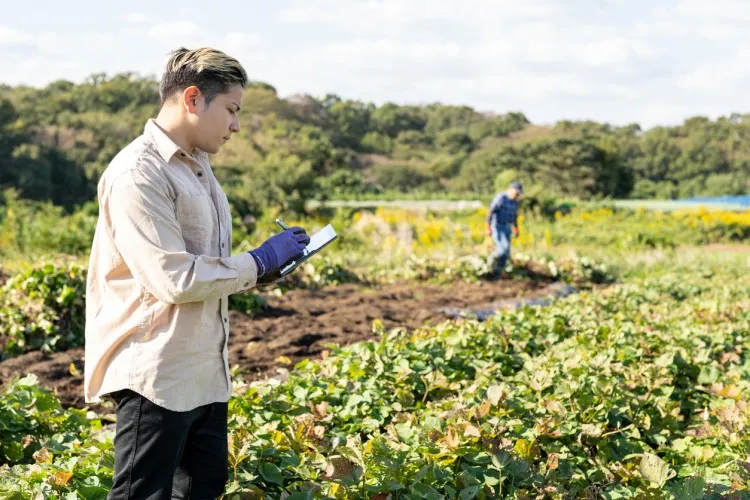Regenerative agriculture is a holistic approach to farming that focuses on restoring and enhancing the health of the soil.
This article explores the main principles of regenerative agriculture and its impact on soil carbon dynamics. We will delve into the relationship between soil carbon and climate change, as well as the techniques farmers can use to increase soil carbon through regenerative agriculture practices.
We will discuss the benefits, challenges, and future of regenerative agriculture, providing examples and insights for farmers, governments, and organizations.
Key Takeaways:
- Regenerative agriculture focuses on improving soil health and biodiversity through sustainable farming practices.
- Increased soil carbon through regenerative agriculture can help mitigate climate change and improve soil quality.
- Implementing regenerative agriculture practices requires support from farmers, governments, and organizations to overcome challenges and ensure long-term success.
What is Regenerative Agriculture?
Regenerative Agriculture is a holistic approach to farming that focuses on restoring and enhancing the health of the ecosystem, including the soil, water, and biodiversity, aiming to improve the natural resources for future generations.
The principles of regenerative agriculture are deeply interconnected with sustainability and resilience, emphasizing practices such as minimal soil disturbance, diverse crop rotations, and the use of compost and cover crops.
This approach not only aims to sequester carbon and reduce greenhouse gas emissions but also contributes to enhanced water retention, increased nutrient levels, and improved wildlife habitats.
Organizations such as the World Resources Institute and the Environmental Defense Fund actively support and promote regenerative agriculture as a means to address environmental challenges and contribute to the goals set out in the Paris Climate Agreement.
What are the Main Principles of Regenerative Agriculture?
The main principles of regenerative agriculture revolve around building soil health, restoring ecosystem balance, promoting biodiversity, and increasing resilience to climate change and other environmental challenges.
Building soil health is crucial as healthy soil supports the growth of crops and enhances the Soil Carbon Cycle, which aids in carbon sequestration and mitigates climate change.
Ecosystem restoration involves nurturing diverse habitats that support a wide range of flora and fauna, contributing to the overall biodiversity of the area. Promoting biodiversity not only prevents the loss of crucial species but also strengthens the resilience of the ecosystem against potential disturbances.
The emphasis on climate resilience helps agricultural systems withstand extreme weather events and shifts in environmental conditions.
What is Soil Carbon Dynamics?
Soil carbon dynamics refer to the processes involved in the uptake, release, and transformation of carbon within the soil environment, playing a crucial role in the global carbon cycle and climate regulation.
Carbon uptake occurs as plants absorb carbon dioxide during photosynthesis and transfer a portion of it to the soil through their roots, contributing to the buildup of soil organic matter.
On the other hand, carbon release takes place through microbial respiration, decomposition of organic matter, and human activities such as deforestation and land use change, all leading to the return of carbon dioxide to the atmosphere.
The transformation of soil carbon involves complex processes driven by a range of factors including temperature, moisture, and microbial activity.
Various models and measurement techniques such as the Rothamsted Carbon Model and research conducted by Stanford University play a vital role in assessing and understanding these dynamics.
How Does Soil Carbon Affect Climate Change?
Soil carbon significantly influences climate change through its role in carbon sequestration, greenhouse gas emissions, and the regulation of atmospheric carbon dioxide levels, contributing to the mitigation of global warming effects.
Carbon sequestration, the process of capturing and storing atmospheric carbon dioxide, occurs naturally in soils through the decomposition of organic matter by soil microorganisms.
This sequestering of carbon effectively reduces the amount of carbon dioxide in the atmosphere, counteracting the greenhouse effect and helping to regulate global temperatures.
The measurement, reporting, and verification (MRV) methods play a crucial role in understanding and tracking the impact of soil carbon on climate change.
Initiatives like Nori and Vermont Global Warming Solutions Act aim to incentivize and regulate carbon sequestration practices, further enhancing the role of soil carbon in mitigating the effects of global warming.
How is Soil Carbon Measured and Monitored?
Soil carbon is measured and monitored using various scientific techniques and tools, including soil sampling, laboratory analysis, remote sensing, and advanced models such as the Rothamsted Carbon Model, providing insights into soil health and carbon sequestration potential.
Soil sampling involves the collection of soil samples from different depths and locations to capture variations in carbon content. These samples are then subjected to laboratory analysis, where important parameters such as soil organic carbon content, pH, and texture are measured.
Remote sensing techniques, such as satellite imagery and aerial photography, can provide valuable data on soil carbon content over larger geographical areas. Advanced models, endorsed by organizations like the U.S. Environmental Protection Agency and the European Union, integrate data from various sources to estimate soil carbon levels and predict its changes over time.
What is the Impact of Regenerative Agriculture on Soil Carbon Dynamics?
Regenerative agriculture has a profound impact on soil carbon dynamics, as it enhances carbon sequestration, fosters soil microbial activity, and promotes organic matter accumulation, leading to improved soil structure and fertility.
This agricultural approach, championed by various entities such as the Cool Farm Alliance and supported by the United States Department of Agriculture, not only contributes to carbon sequestration but also fosters a conducive environment for microbial communities to thrive, aiding in nutrient cycling and overall soil health.
The implementation of regenerative practices aligns with Nationally Determined Contributions, aiming to mitigate climate change and enhance agricultural sustainability by integrating crop rotation, cover cropping, and reduced tillage.
How Does Regenerative Agriculture Increase Soil Carbon?
Regenerative agriculture increases soil carbon through practices such as cover cropping, crop rotation, minimal tillage, and the integration of agroforestry, fostering the accumulation of organic matter and the enhancement of soil biodiversity.
Cover cropping involves planting a variety of crops during periods when the land would otherwise be left bare. This helps prevent soil erosion and enhances soil fertility, while also sequestering carbon from the atmosphere into the soil.
Crop rotation is another beneficial practice that involves alternating different types of crops in the same area. This helps maintain soil health and prevents nutrient depletion, ultimately contributing to increased soil carbon levels.
Minimal tillage is another important method for promoting soil carbon storage. By reducing soil disturbance, it helps maintain soil structure and organic matter, which are essential for carbon sequestration.
Agroforestry is a sustainable land use system that integrates trees and shrubs into agricultural landscapes. This provides additional carbon sinks and diversifies ecosystems, further contributing to soil carbon storage.
What Are the Benefits of Increased Soil Carbon?
Increased soil carbon offers various benefits, including improved soil fertility, enhanced water retention, reduced erosion, and greater resilience to extreme weather events, contributing to sustainable agricultural productivity and environmental conservation.
When soil carbon levels increase, the soil’s ability to support microbial life and nutrient cycling is enhanced, promoting soil fertility. Higher carbon levels improve the soil’s capacity to retain water, reducing the risk of drought and enhancing plant resilience.
Increased soil carbon contributes to erosion reduction by enhancing soil structure and aggregation, minimizing the impact of wind and water. The resulting improvement in soil stability and structure also supports better crop production and sustainable land use practices.
Soil with higher carbon content exhibits increased resilience to extreme weather, mitigating the impacts of climate events such as floods and droughts, which are becoming more frequent and intense due to climate change.
What Are the Challenges of Implementing Regenerative Agriculture?
The implementation of regenerative agriculture poses challenges such as initial investment costs, knowledge and skill requirements, transition period complexities, and the need for policy and market support to incentivize sustainable practices and long-term commitment.
One of the main hurdles in implementing regenerative agriculture is the high initial investment costs. Farmers and landowners often face financial barriers when transitioning to regenerative practices, as it requires investment in new equipment, infrastructure, and additional resources for soil health and biodiversity enhancement.
Transitioning to regenerative agriculture requires a deep understanding of ecological processes, soil biology, and diversified farming methods. This necessitates knowledge and skill requirements that may go beyond traditional farming practices.
The transition period from conventional farming to regenerative agriculture can be complex and challenging. It involves adopting new strategies for soil and water management, changing crop rotations, and altering livestock management practices. The shift towards regenerative practices also requires patience and adaptability as it may take time to see the full ecological benefits.
The agriculture sector may need support from policies and markets to create a favorable environment for regenerative practices and ensure a stable market for sustainably produced goods.
How Can Farmers Incorporate Regenerative Agriculture Practices?
Farmers can incorporate regenerative agriculture practices through the adoption of diverse crop rotations, cover cropping, no-till or reduced-till methods, integration of livestock into cropping systems, and the utilization of agroecological principles to enhance ecosystem resilience and productivity.
One effective regenerative practice is crop rotation, which involves alternating the types of crops grown in a particular field over time. This approach can help break pest and disease cycles while improving soil health and fertility.
Additionally, cover cropping involves planting specific crops during off-season periods to protect and enrich the soil. The use of no-till or reduced-till methods can minimize soil disturbance, reduce erosion, and maintain soil organic matter.
Livestock integration into cropping systems allows for grazing and manure deposition, which benefits soil health by increasing nutrient cycling. Adopting agroecological principles enables farmers to consider ecological processes in their agricultural production, leading to sustainable and resilient farming practices.
What Are Some Examples of Regenerative Agriculture Techniques?
Examples of regenerative agriculture techniques include agroforestry, silvopasture, keyline design, holistic planned grazing, and the use of diverse cover crops, each contributing to soil health improvement, carbon sequestration, and biodiversity enhancement.
Agroforestry practices involve the integration of trees and shrubs with crops or livestock, creating a sustainable and diverse agricultural system.
Silvopasture combines trees, forages, and livestock to efficiently use resources and improve ecosystem services.
Keyline design is a method of landscape planning that aims to enhance water and soil preservation.
Holistic planned grazing involves rotational grazing and careful monitoring to benefit soil health and pasture productivity.
Diverse cover crops, such as legumes and grasses, promote soil fertility and prevent erosion.
How Can Governments and Organizations Support Regenerative Agriculture?
Governments and organizations can support regenerative agriculture through the provision of financial incentives, policy frameworks, technical assistance, research funding, and the promotion of sustainable agricultural practices, contributing to the widespread adoption of regenerative principles.
Financial incentives play a crucial role in encouraging farmers to transition to regenerative practices. Governments can provide subsidies or grants to support the initial investment in transitioning from conventional to regenerative farming.
Policy frameworks that prioritize regenerative agriculture in Nationally Determined Contributions can serve as a powerful tool for mainstreaming these practices.
Technical assistance programs can offer valuable support to farmers looking to implement regenerative techniques, providing access to expertise, training, and resources. Collaboration with organizations such as the World Resources Institute and the Environmental Defense Fund can enrich the dissemination of best practices and knowledge exchange.
Research funding is essential for advancing the understanding of regenerative agriculture and developing innovative solutions. Investments in research can lead to the discovery of new methods, improved technology, and the refinement of sustainable farming practices.
What is the Future of Regenerative Agriculture and Soil Carbon Dynamics?
The future of regenerative agriculture and soil carbon dynamics holds the potential for widespread adoption of sustainable practices, increased collaboration among diverse stakeholders, better policy integration, and the scaling up of soil carbon measurement and mitigation efforts to address climate change and global food security challenges.
Partnerships such as the Cool Farm Alliance are driving research and innovation to advance regenerative agriculture. They provide practical tools and methodologies to help producers optimize their operations.
In addition, Stanford University is at the forefront of developing cutting-edge techniques to accurately measure and model soil carbon dynamics. Their contributions provide valuable data for knowledge-based decision making and monitoring progress towards the targets set under the Paris Climate Agreement.
Frequently Asked QuestionsWhat is regenerative agriculture?
Regenerative agriculture is an approach to farming that focuses on restoring and improving the health of the soil ecosystem through practices such as crop rotation, cover cropping, and reduced tillage.
How does regenerative agriculture impact soil carbon dynamics?
Regenerative agriculture can increase soil carbon storage by promoting the growth of plants with deep root systems, reducing soil disturbance, and increasing organic matter inputs into the soil.
What are some benefits of regenerative agriculture on soil carbon dynamics?
Some potential benefits of regenerative agriculture on soil carbon dynamics include improved soil fertility, increased water retention, and reduced erosion.
Can regenerative agriculture help mitigate climate change?
Yes, regenerative agriculture has the potential to mitigate climate change by sequestering carbon in the soil and reducing greenhouse gas emissions from conventional farming practices.
Are there any challenges associated with implementing regenerative agriculture?
Some challenges associated with implementing regenerative agriculture include the initial investment of time and resources, adapting to new farming methods, and potential resistance from conventional farming systems.
How can individuals support the adoption of regenerative agriculture?
Individuals can support the adoption of regenerative agriculture by seeking out and supporting regeneratively grown food, educating themselves and others about its benefits, and advocating for policies that promote regenerative farming practices.






